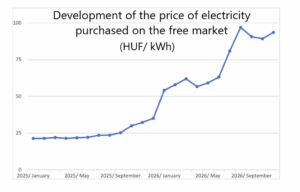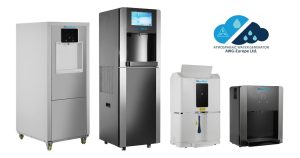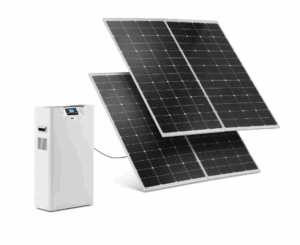Why and how can we use solar panels?
In this article, I would like to help those “non-electrical engineer” readers like me, who would like to leave a smaller ecological footprint on this Planet, but would not give up the use of their electrical appliances used so far. Let’s look at the possibilities of the solar panel transition together!
Electricity has become expensive and there is a problem with distribution

The price of electricity has risen significantly in the European Union in recent years, including one of the highest in Spain, for example. There are several factors behind the price increase, such as the increase in the price of natural gas, geopolitical factors, taxes and the impact of weather conditions.
Last Monday’s national blackout in Spain was so large that it is expected to be reflected in the gross domestic product (GDP), which is also a warning sign regarding the risks of centralized power supply. Those who have their own solar system can not only forget about paying their electricity bills, but also enjoy the freedom of complete disconnection from utilities – especially if they also manage their own water production with an atmospheric water generator (AWG).
Basic information about solar panels
The operation of a solar cell is based on the photovoltaic effect, during which the energy of sunlight is converted into electricity. Solar cells are made of semiconductor materials that release electrons when exposed to solar radiation, thus generating an electric current.
The main types of solar panels
- Monocrystalline solar cells – They have the highest efficiency (15-19%) and a long lifespan (up to 30 years). They work great in direct sunlight.
- Polycrystalline solar cells – They have a slightly lower efficiency (14-16%), but they make better use of scattered light, making them less sensitive to orientation and weather.
- Amorphous silicon solar panels – They are lower in efficiency (4-6%), but they are cheaper and require a larger surface area. They work better in diffused light.
Voltage of solar panels (Volts)
The voltage of solar panels depends on several factors, such as the number of cells and the technology used. Generally, the output voltage of residential and commercial solar panels is between 12V and 48V.
Typical solar cell voltage ranges:
– Single solar cell: approx. 0.5-0.6V
– 60-cell solar module: approx. 30-40V
– 72-cell solar module: approx. 36-48V
– Low-voltage solar panels: from 12V to 24V – these are used for smaller systems such as motorhomes, boats or mobile homes.
– Medium voltage solar panels: between 24V and 48V – these are found in commercial and residential systems.
The voltage of the solar panels is module-dependent and can be connected in series or parallel to optimize their performance. If you are looking for a solar panel with the right voltage for a specific system, it is also worth considering the compatibility of the inverter and the battery.
Creating a small household solar panel system
Connecting a home appliance to a solar panel is a great way to reduce your energy consumption and electricity bill!
The following steps can help you do this:
- Installing solar panels – First of all, you will need a solar panel system of the right size and performance. This should be installed on the roof or in a suitable place.
- Using an inverter – Solar panels produce direct current (DC), while most home appliances use alternating current (AC). The inverter converts the electricity from the solar panel, so that appliances can use it.
- Energy storage (battery) – If you want to use solar energy even when the sun isn’t shining, a battery will help you store energy.
- Energy management system – A smart energy management system can automatically optimize when and how machines use solar energy, and automatically switch to the normal grid as needed and provide a continuous power supply.
- Feeding back to the grid – In the case of a complex solar panel solution, if the solar panels produce more energy than you use, you can feed it back into the power grid if the service provider allows it and provides a “smart meter”.
What household appliances are best suited?
If you want to connect a specific device to solar energy, it is also worth considering its energy requirements and compatibility. Many home appliances work great with a solar system, especially those that are energy-efficient and do not require continuous high power. Here are some examples:
- Refrigerators and freezers – Energy-efficient models, especially those rated A+++, work well with solar systems because they operate continuously but with low power consumption.
- Washing machines and dishwashers – By using them during the day, when solar panels produce the most energy, you can minimize grid power use.
- Atmospheric water generators and electric water heaters – Solar-powered water heaters or heat pump systems use the energy produced efficiently.
- LED Lighting – Low-power LED lights are ideal for solar systems because they require little energy.
- Electric ovens and stovetops – Although they require more power, they can work efficiently when combined with a right-sized solar system and battery.
- Electric car chargers – If you have an electric car, you can significantly reduce charging costs by combining it with a solar system.
- Fans and air conditioners – Energy-efficient models, especially heat pump air conditioners, are well suited to solar systems.
How do you connect a WizzWell home size atmospheric water generator that you want to run specifically on solar energy?
This is WizzWell G10 is the smallest type of atmospheric water generator distributed by AWG-Europe, providing you with 10 litres of healthy and always fresh drinking water per day. This home appliance is 220V, has a power consumption of 190 watts (only when it is working) and the process of connecting it to the solar system is as follows:
- Choosing the right solar panel – To operate the machine, you need solar panels that generate enough power. In the case of a 200W device, a solar panel with a power of at least 250-300W is recommended to ensure continuous operation.
- Using an inverter – Since solar panels generate direct current (DC), you’ll need an inverter that converts this into 220V alternating current (AC) to be compatible with your home appliance.
- Use a battery and charge controller – If you want your machine to work even when there is no direct sunlight, a battery will help store energy, and a charge controller will ensure that the battery is properly charged and protected.
- Connection methods – You can connect the machine directly to the inverter or combine solar and grid power with a regenerative system.
The popularity of solar panel systems is increasing, in many places EU tender support can be applied for such an investment, and in addition, solar panels are available in a wide range and at increasingly affordable prices. AWG-Europe is committed to environmental protection and distributes atmospheric water generators for family, office, community or industrial purposes that are well suited to solar systems.
Do you already have an atmospheric water generator?



very informative articles or reviews at this time.
My aim is to inform that everyone should achieve a clever solution for water scarcity
This is such a valuable article! 👏 I really like how you’ve managed to explain the topic in a clear and practical way—it feels authentic and easy to relate to. Reading it gave me some new perspectives that I can actually apply. I’m especially interested in content like this because at meinestadtkleinanzeigen.de we’re running a classifieds and directory platform in Germany that connects people with services, businesses, and opportunities across many categories. Insights like yours remind me how powerful it is when knowledge and connections come together. Thanks for sharing—looking forward to more of your work! 🚀
Thanks for your kind reaction and interst! I’m truly appreciated sharing my content on your platform in Germany.